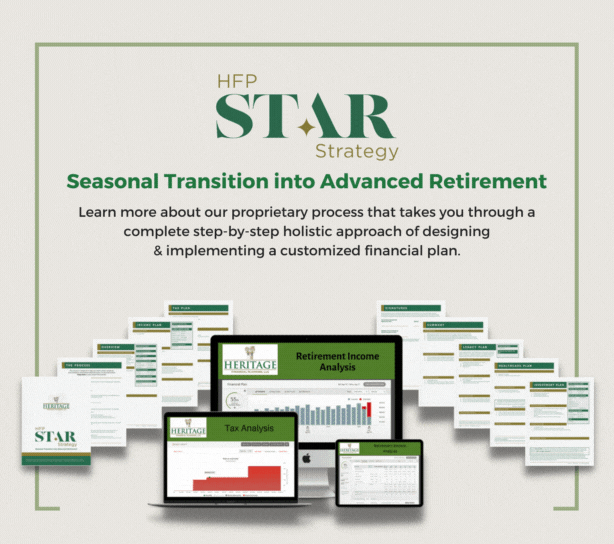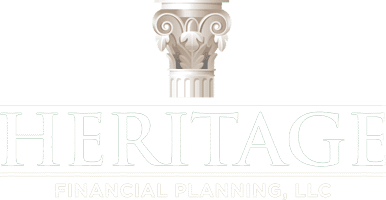Understand the differences between price and value and stay disciplined.
At Heritage Financial Planning, we know how overwhelming it can feel to stay focused during turbulent times in the market. One week it’s tariffs. The next, it’s inflation or rising interest rates. Volatility, headlines, and economic uncertainty can shake even the most seasoned investors. Our job is to help you stay grounded – not in emotion, but in evidence. Here’s what we believe every client and investor should remember about the stock market – and how tariffs fit into the bigger picture.
Markets Are Random – Even the Experts Agree
Nobel Laureate Eugene Fama, who helped shape modern finance, received the Nobel Prize in 2013 for proving what long-term investors already sense: markets are unpredictable. Prices respond to new information in real time, leaving little room for forecasts or patterns to consistently pay off.
Many people believe they—or their advisors—can time the market. But while occasional wins may happen, no strategy has reliably worked over the long haul. The real path to success? Staying disciplined, staying invested, and sticking to clearly defined goals.
What Is the Market, Really?
We’re often asked, “What exactly is the market?” It’s not a single entity. The market is a collection of thousands of companies, across diverse sectors and industries, each affected by different economic forces. Think of it like a grocery store: dairy, meat, produce, snacks – all priced differently, all playing a part in your total basket.
And just like in a supermarket, prices in the market are driven by supply and demand. Every buyer has a seller. These transactions—not some external puppeteer—set the prices. And because humans drive behavior, emotions often create price swings that don’t align with long-term value.
Price vs. Value: A Critical Distinction
Here’s one of the most vital lessons we teach our clients: price does not equal value. Price is what someone is willing to pay right now. Value is the true worth of a company—its revenue, assets, business operations, and liabilities.
When tariffs were announced recently, the Dow dropped from 40,000 to 37,000. Just days later, after a temporary tariff pause, it rebounded. Did the core value of those companies actually change in a week? Not at all. What changed was perception and emotion—reflected in the price.
Speculative bubbles follow the same logic. Between 2023 and 2025, tech stocks soared, much like during the dot-com boom. But most of those gains weren’t based on true value—they were speculative. And when speculation gets ahead of fundamentals, corrections are bound to happen.
Tariffs Are Just One Piece of the Puzzle
Yes, tariffs grab headlines—but they are just one of many factors influencing the market. Inflation, interest rates, government debt, employment, immigration policy, consumer spending—all of these elements matter. Tariffs alone don’t define market performance.
The strong U.S. stock returns in 2023 and 2024—over 20% each year—were largely driven by a handful of mega-cap tech stocks like Apple, Microsoft, Nvidia, and others. This narrow performance skewed results.
Plus, those years were also fueled by an inflated money supply that injected liquidity into the system. As that liquidity dries up, we may face new volatility ahead.
Rules Outperform Reactions
Investing based on emotion rarely ends well. It’s reactionary, not strategic. Markets are naturally volatile. Responding to every up and down can hurt long-term outcomes.
That’s why we encourage clients to follow a structured, evidence-based plan. If you’re already invested, stay invested. If you’ve moved to cash because of a specific need, that’s valid—but don’t try to time the news cycle. Market timing is one of the fastest ways to derail long-term progress.
The S&P 500 averages around 10% per year with dividends reinvested. But it’s rarely ever exactly 10%—just five times in nearly a century. Year to year, returns vary. But over time, the trajectory has been reliably upward.
Flight to Safety Is Part of the Cycle
When uncertainty strikes, investors often move to “safe” assets like Treasury bonds. That’s understandable. But while it may reduce short-term risk, it can also limit long-term growth.
The key is making sure your strategy aligns with your personal goals and time horizon. Economic slowdowns, recessions, and rate hikes are all part of a normal economic cycle—not permanent threats. The most successful investors understand this and plan accordingly.
Let Your Goals, Not Headlines, Guide You
Yes, tariffs matter. But they should never determine your overall investment strategy. What matters more is knowing the difference between price and value, following a disciplined plan, and making choices based on logic—not emotion.
Let your long-term goals lead the way. Headlines come and go. What lasts is the strength of your financial strategy, your diversification, and your resilience.
Navigating Volatility with the HFP S.T.A.R. Strategy
At Heritage Financial Planning, we help clients navigate turbulent markets through our HFP S.T.A.R. Strategy—Seasonal Transition into Advanced Retirement. This proprietary approach is designed to help pre-retirees and retirees optimize income, manage risk, and adapt with confidence through every phase of retirement. It’s not just about surviving market changes—it’s about thriving through them.
If you’re ready for a smarter, more grounded path to retirement, contact our office today to schedule your personalized S.T.A.R. Strategy consultation. We’re here to help you stay the course—and rise above the noise.

Click here to learn more about our HFP STAR Strategy process.
Source: Copyright © 2025 FMeX. All rights reserved. Distributed by Financial Media Exchange.












